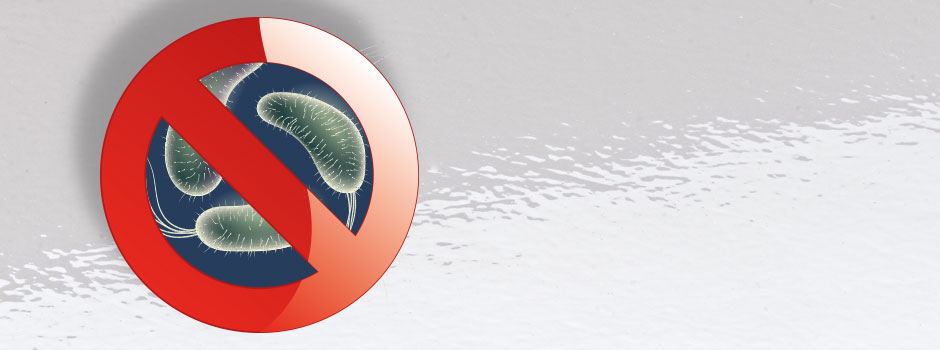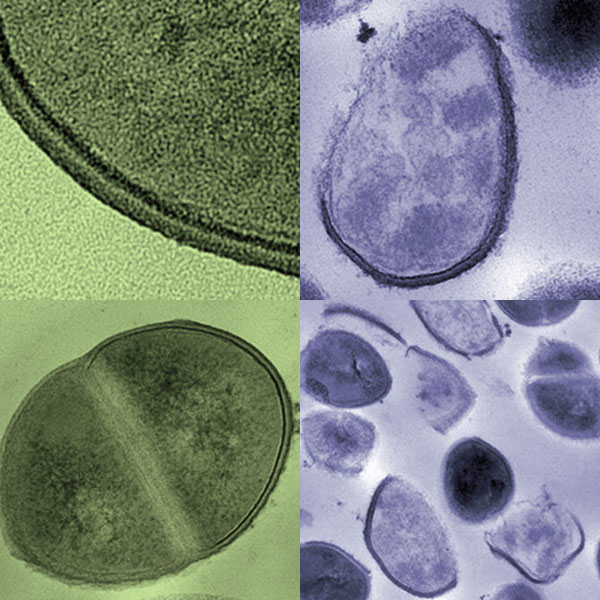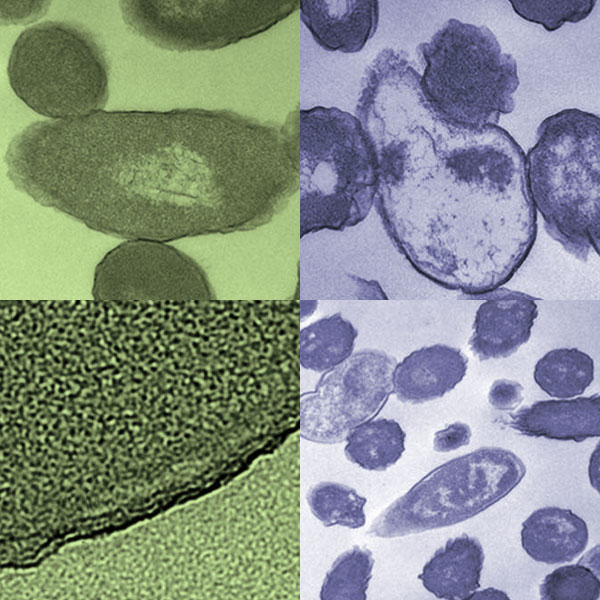


Separation of the cell membrane from the cell wall of Gram-positive Staphylococcus aureus by Ag+ (LEFT - normal cells, RIGHT - seperation)

Separation of the cell membrane from the cell wall of Gram-negative E. coli by Ag+ (LEFT - normal cells, RIGHT - seperation)
The JIS Z 2801 (ISO 22196), is the most commonly chosen method to test the antimicrobial hard surface performance with a very sensitive procedure.
The procedure starts with inoculation of control and test surfaces with Gram-positive and Gram-negative bacteria in a suspension of standardized dilution, cultured in liquid medium.
Antimicrobial characteristics of the test surface is quantized by calculated levels of antimicrobial activity after 24 hours; during which, inoculated test and control surfaces are alowed to incubate undisturbed in a humid environment.
Decopan Antibacterial contains silver ions to increase its antimicrobial action besides its prime hygienic quality.
Silver ions’ antibacterial mode of action is connected with three mechanisms:
Silver ions interact with bacterial inner membrane, where the cytoplasmic membrane is seperated from the cell wall after the interaction.
Silver ions support antibacterial activity strongly (e.g. approved activity in staphylococci within 30 minutes (Randall CP)) by the above mentioned mechanism trio.
Decopan Antibacterial sheets / panel are:
Ref: Klasen H.J., Banhart F., Kotakoski J., Koebnik R., Locher K.P., Van Gelder P. Kedziora A.